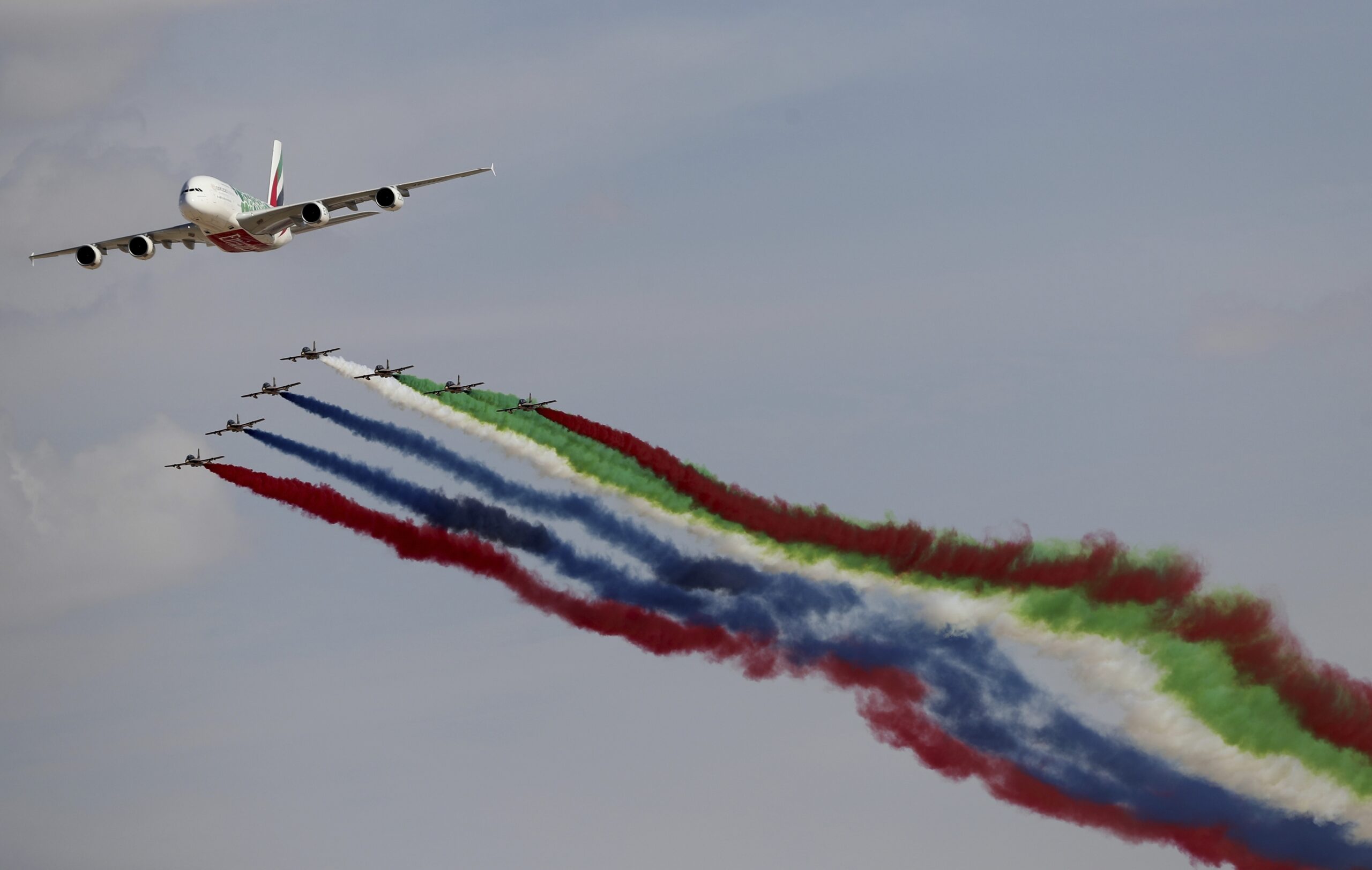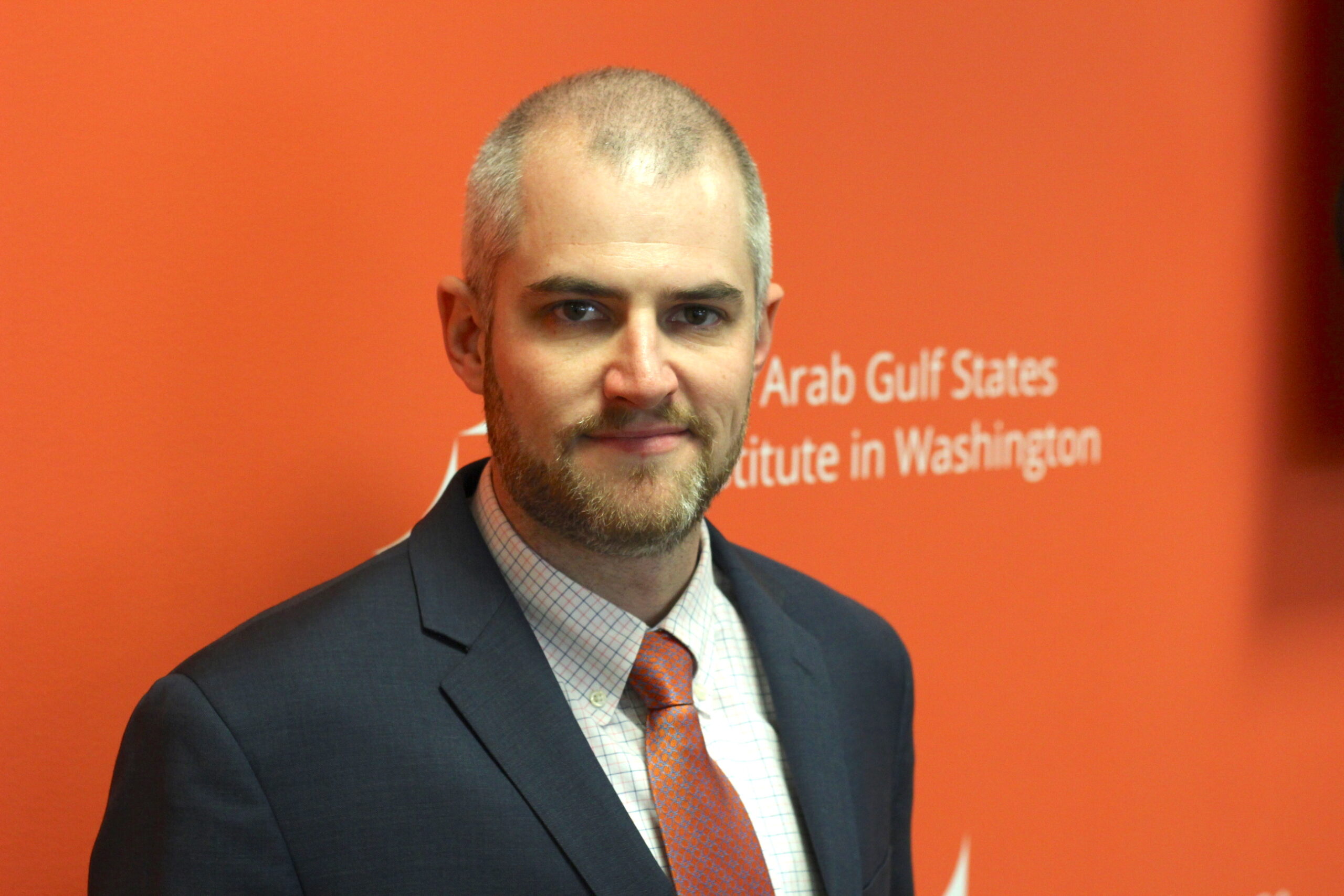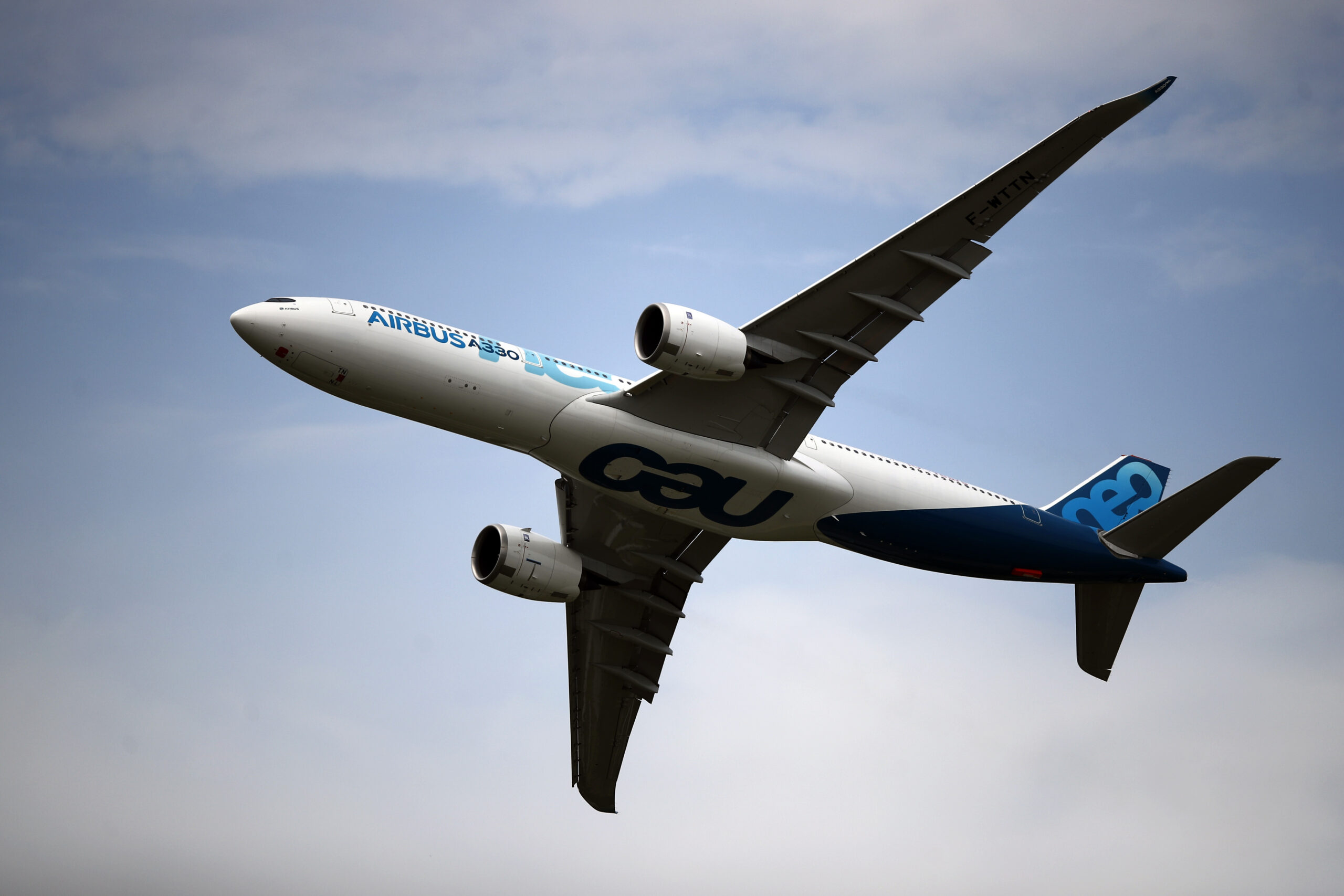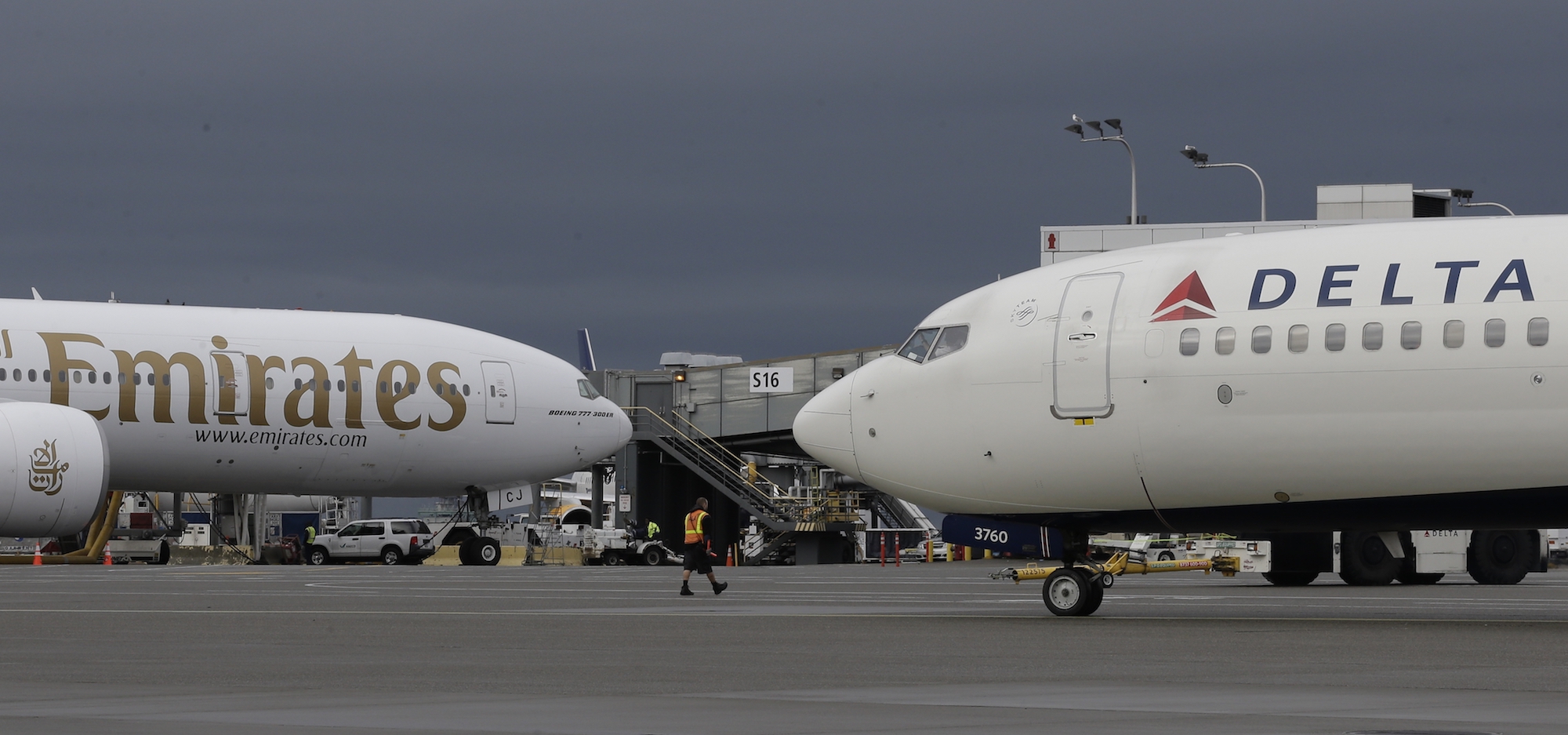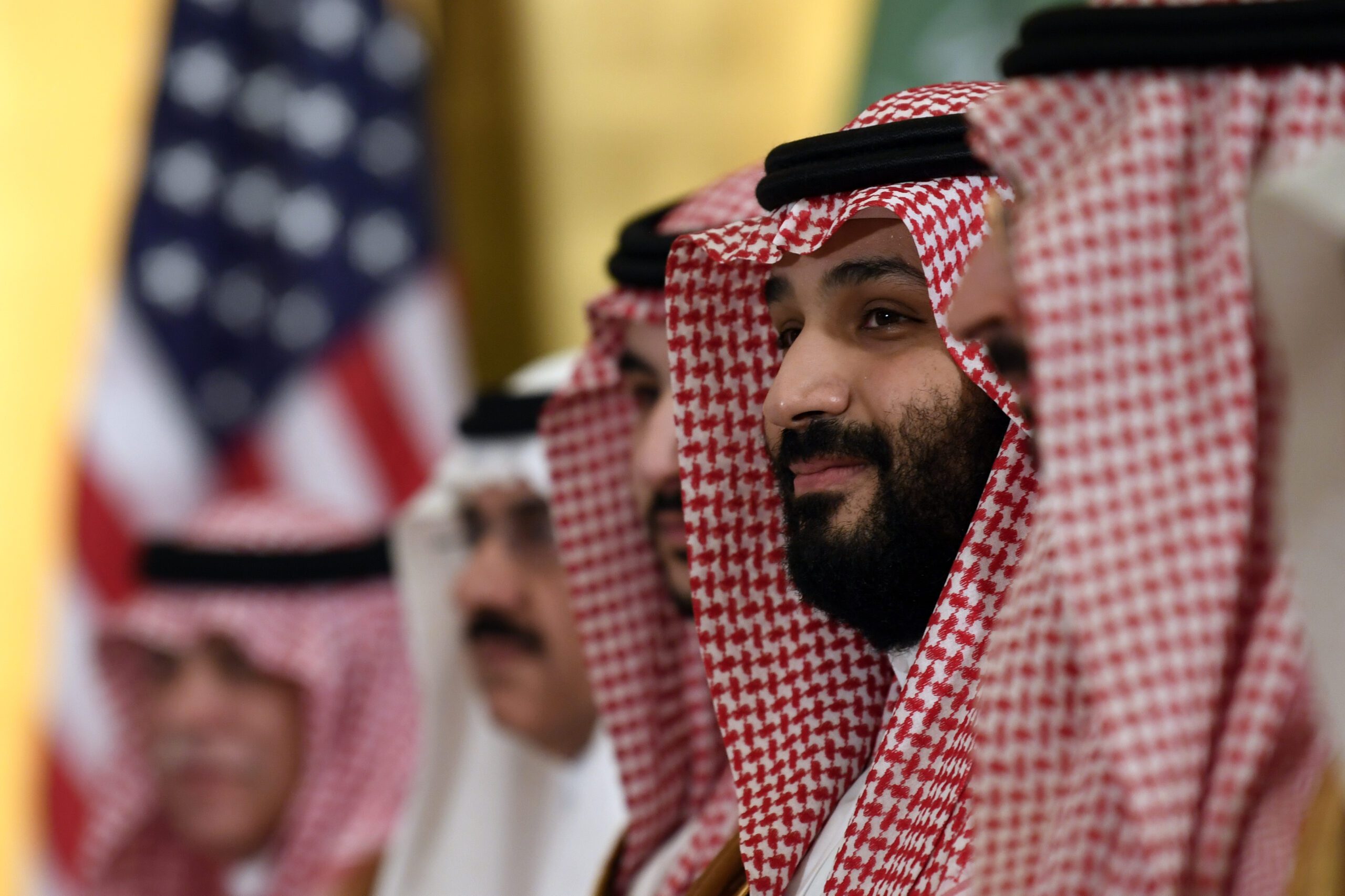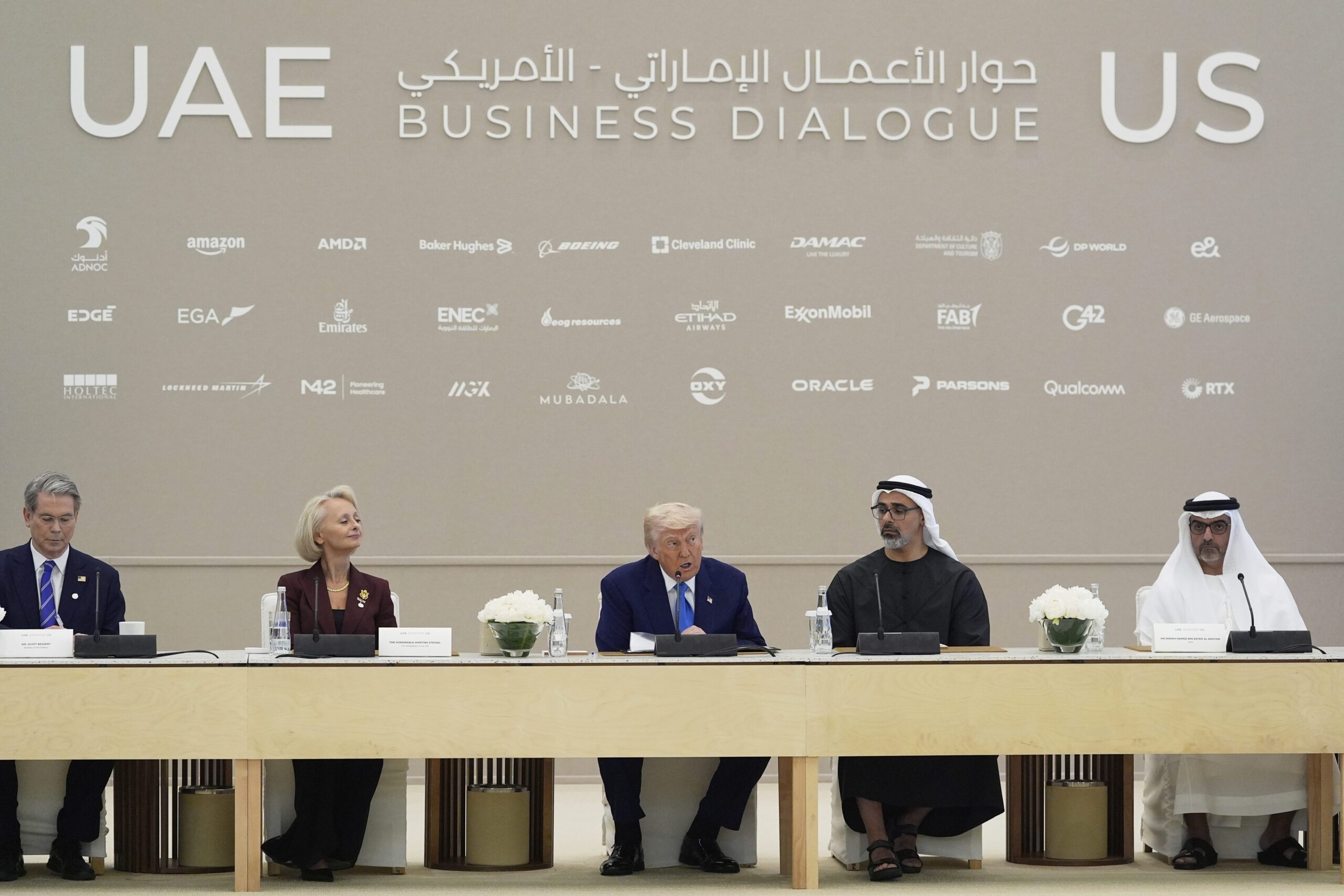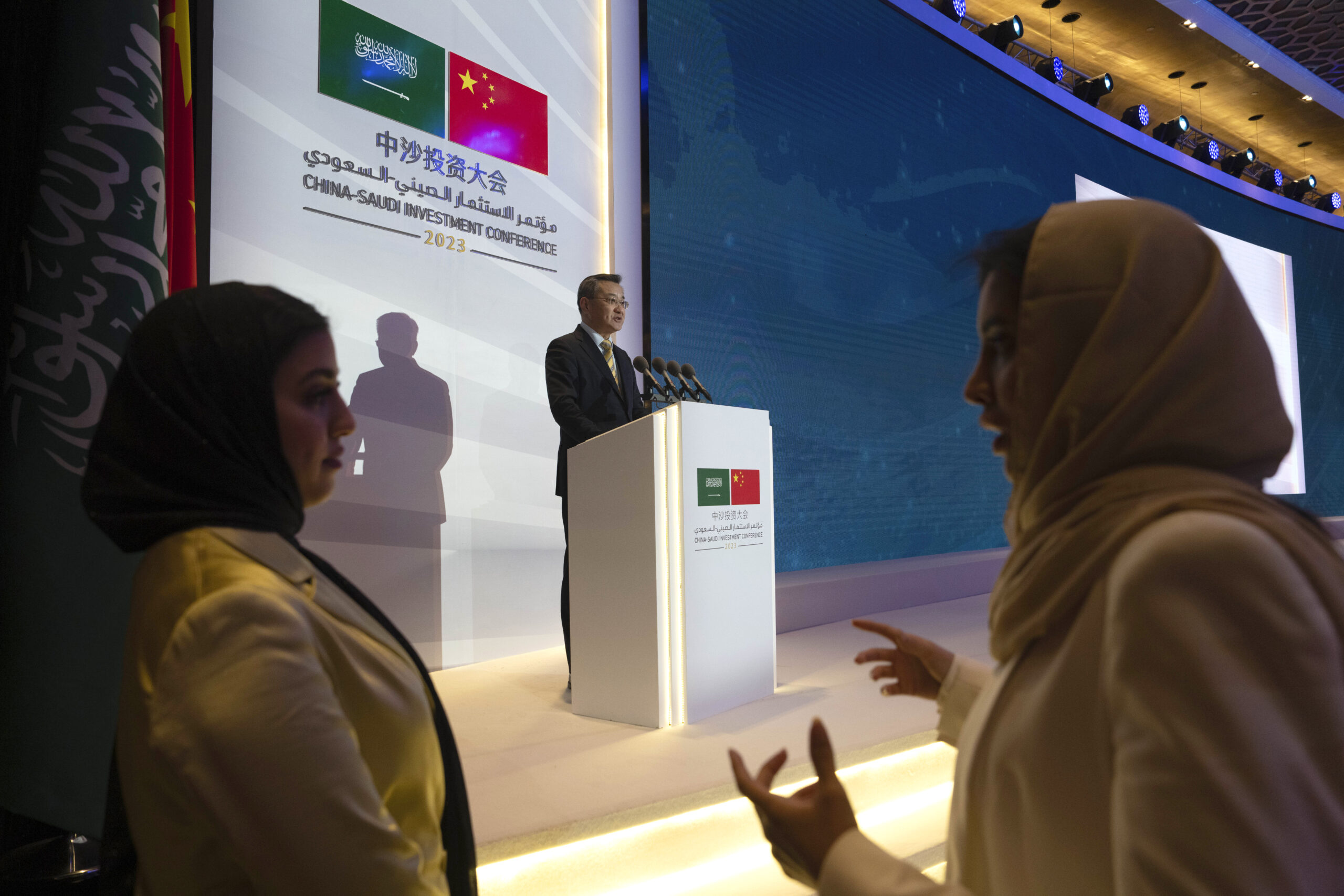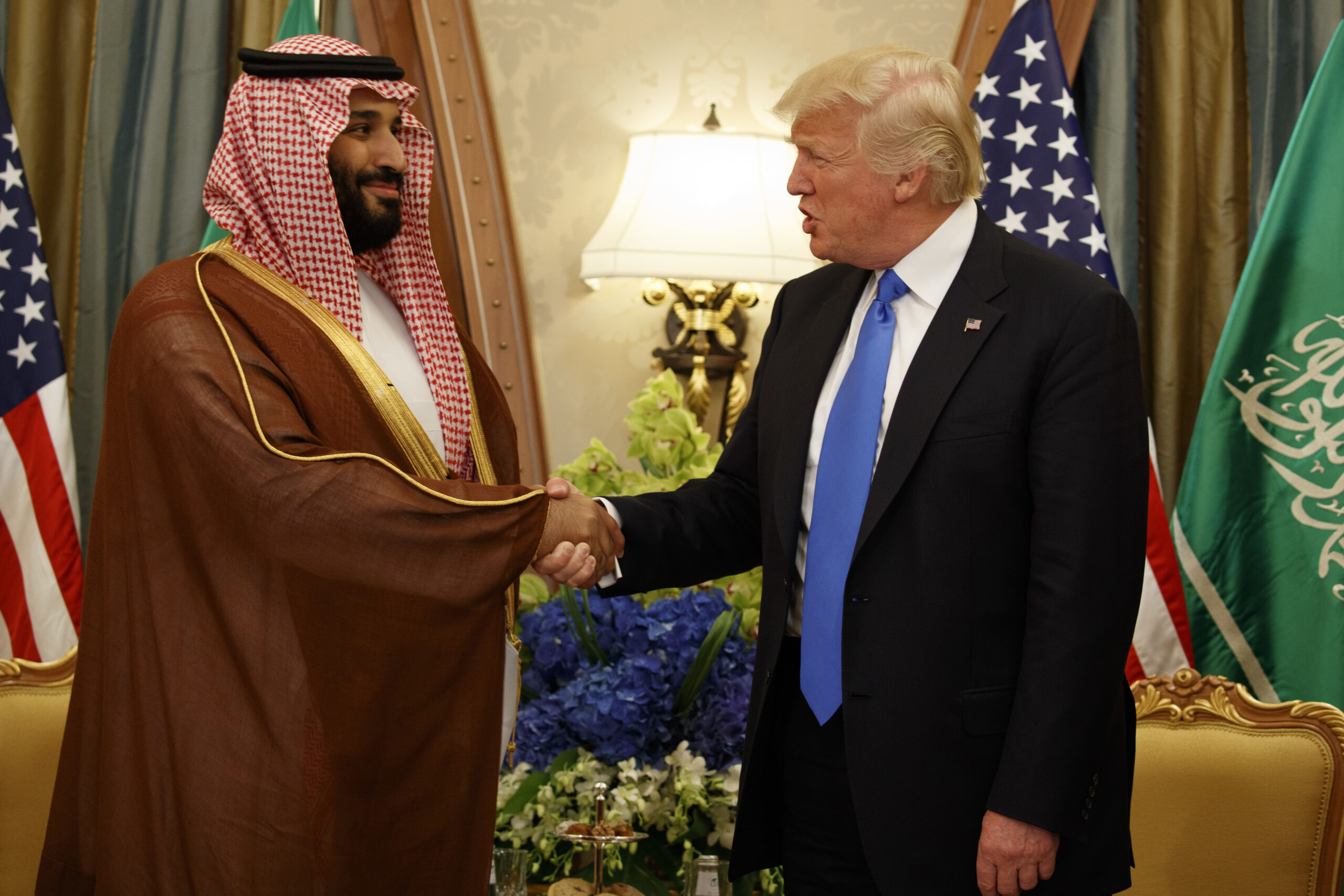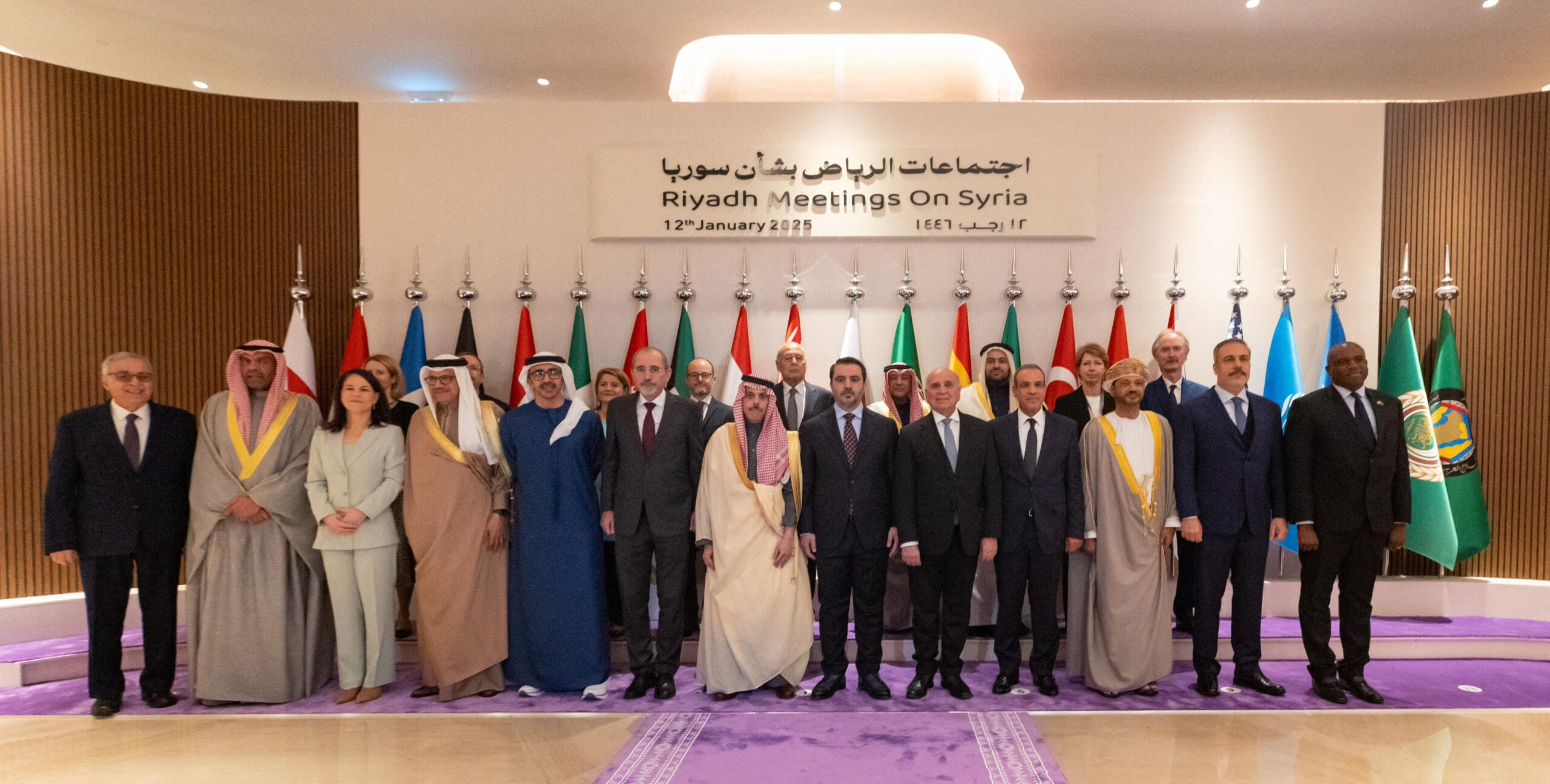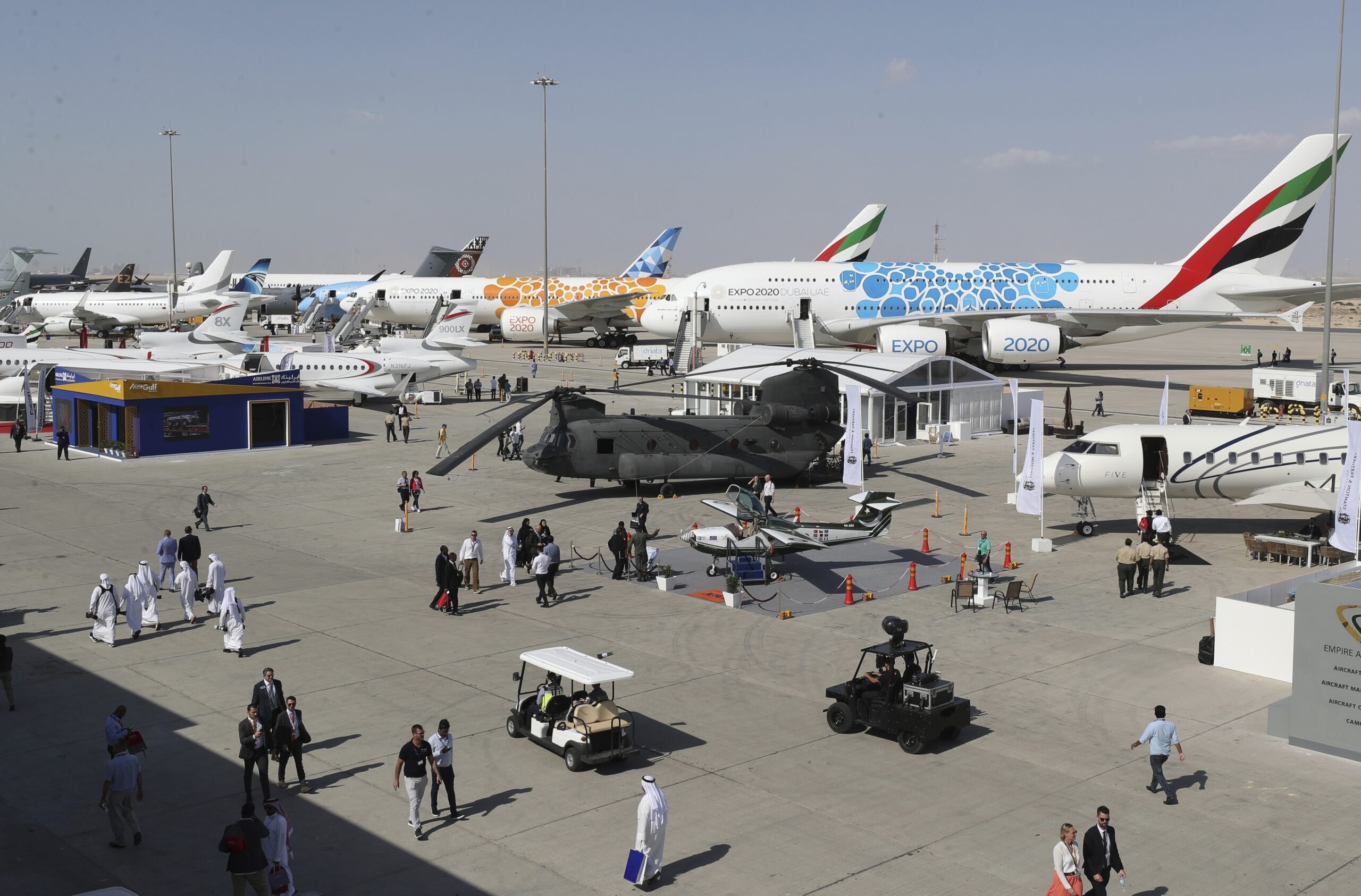
Gulf airlines have significantly curtailed operations and suspended flights to combat the spread of the coronavirus pandemic. State-owned airlines, such as Emirates, Etihad Airways, and Qatar Airways, are household names. Yet prior to the coronavirus outbreak, these airlines struggled to differentiate themselves among regional counterparts and compete globally in a fierce industry. Travel bans and restrictions on entry are forcing Gulf carriers to cut capacity and reduce costs. The industry’s recovery is likely to be slow and painful, with aviation-related disruptions spilling over to interrelated segments of the region’s economies.
International airlines may lose $250 billion of revenue in 2020, according to grim estimates by the International Air Transport Association. Carriers in the Middle East are expected to shoulder around $19 billion of this lost revenue. The IATA’s regional vice president for Africa and the Middle East, Muhammad Al Bakri, urged governments to “give the airlines the support they need to bridge them through this crisis and participate in rebuilding the economy.”
Dubai’s government pledged financial support for Emirates but declined to specify the amount of government aid. The emirate-owned, Dubai-based airline is seeking billions of dollars more in loans from local and international banks. Sharjah’s Air Arabia halted plans to launch a new low-cost airline with Etihad Airways in June and reportedly asked the United Arab Emirates government for financial assistance. On March 29, the chief executive of Qatar Airways, Akbar al-Baker, said his airline “will surely go to our government eventually” for state aid. Gulf Arab governments may think twice about injecting substantial capital into regional airlines, given emergency spending needs to combat the coronavirus outbreak and budgetary constraints owing to low and volatile oil prices.
The region’s largest carriers have struggled to overcome commercial and operational obstacles in recent years. Abu Dhabi’s national carrier, Etihad Airways, viewed losses of $870 million in 2018 as “encouraging,” following cumulative losses of $5.62 billion since 2016. Etihad Airways’ five-year turnaround plan, which materialized before the coronavirus outbreak, hoped to achieve profitability in 2023. Expansion plans for Al Maktoum International Airport in Dubai have been delayed multiple times since the emirate’s new airport opened for cargo in 2010 and passenger flights in 2013. On April 1, Emirates shifted all cargo services to Dubai International Airport and temporarily suspended operations at Al Maktoum.
The CEO of Saudi Arabian Airlines, more commonly known as Saudia, Jaan Albrecht, describes the national carrier as a “sleeping giant,” and considers religious traffic and changes in visa procedures as opportunities for the airline to regain market share. With temporary suspensions of pilgrimages to holy sites in Saudi Arabia and restrictions on tourist visas, this commercial strategy will need to be put on ice.
Qatar Airways has been banned from using Saudi, Emirati, and Bahraini airspace following the imposition of a boycott on Qatar by those governments in 2017. Consequently, Qatar Airways not only lost access to many Gulf destinations but also must rely heavily on Iranian airspace, resulting in longer flights and higher fuel costs. U.S.-Iranian tensions heighten the risks associated with Qatar’s reliance on Iranian airspace, both in terms of airspace restrictions in the event of a conflict and the potential for miscalculations similar to the downing of the Ukrainian passenger plane in January.
Low-cost carriers in the Gulf fared relatively well before the coronavirus outbreak. Kuwait’s Jazeera Airways increased its year-on-year profit by 124% in 2019. Air Arabia, a low-cost carrier based in Sharjah, posted a $272 million profit in 2019, an increase of 80% from the previous year. Flydubai’s nearly $54 million in 2019 profits were owed in large part to an interim settlement agreement with Boeing. The Omani budget airline SalamAir came close to breaking even in 2019 and expected to turn a profit in 2020. Stronger finances, however, are not a sufficient bulwark against the unprecedented economic impact of coronavirus-related disruptions.
Struggling airlines will be costly for Gulf Arab states, which depend on the aviation industry as an important component of regional economies. Aviation and tourism account for an estimated 13% of gross domestic product in the UAE. In the emirate of Dubai, the aviation sector was expected to grow from around 27% of GDP in 2013 to 37.5% by 2020. Qatar’s aviation industry accounted for a reported 11% of the small country’s GDP in 2014. Saudi Arabia’s air transport sector – which includes airlines, supply chains, and foreign tourists – constituted 5.6% of the country’s GDP in 2018.
The aviation industry is also a major employer across the region. Forecasted slumps in demand caused by the coronavirus outbreak may lead to over 500,000 job losses in Saudi Arabia and the UAE alone. Oman Air plans to reduce its headcount, but the state-owned carrier has not announced how many jobs are at risk.
Coronavirus-related disruptions to the Gulf’s aviation industry further affects a battered logistics industry. In addition to a turbulent 2019, owing to trade wars and geopolitical tensions, demand for air cargo decreased by 3.3% in January, compared to the same period in 2019. Air freight rates in the Middle East and Africa “have reached unprecedented levels,” according to Agility, a leading logistics company.
Airport free zones, such as the ones at Dubai and Abu Dhabi Airports, sit at the intersection of the aviation and logistics industries. DAFZA announced a stimulus package to help its free zone companies through lease waivers, refunds, and exemptions. In late February, the Oman Aviation Group announced plans to develop Oman Airport City as part of the country’s National Aviation Strategy 2030. The 20-year project includes a free zone, logistics hub, and retail area.
The region’s tourism industry is likewise closely linked to the aviation industry. Tourism has essentially ceased to exist as governments worldwide determine how best to slow the coronavirus outbreak. Saudi Arabia, which has long relied on religious tourism to Mecca and Medina, unveiled new tourism visa regulations in 2019. For the moment, Saudi officials will struggle to portray the country as a budding destination for global tourists. With land border crossings between Saudi Arabia and Bahrain limited to commercial traffic, Bahraini businesses are unable to capitalize on a steady influx of Saudi tourists. Traditional tourism hubs, such as the UAE, and those offering niche tourism experiences, like Oman, are similarly vulnerable.
Gulf aviation hubs occupy strategic positions along the transit corridors connecting eastern and western destinations. Yet abrupt – and possibly lasting – changes to the air transport sector threaten existing business models over the short and medium terms. Reduced business travel, greater localization of supply chains, and skittish tourists constitute longer-term issues on the industry’s horizon. As the dust settles from the coronavirus outbreak and flights resume, regional airlines will need to update their commercial strategies.
The views represented herein are the author's or speaker's own and do not necessarily reflect the views of AGSI, its staff, or its board of directors.


